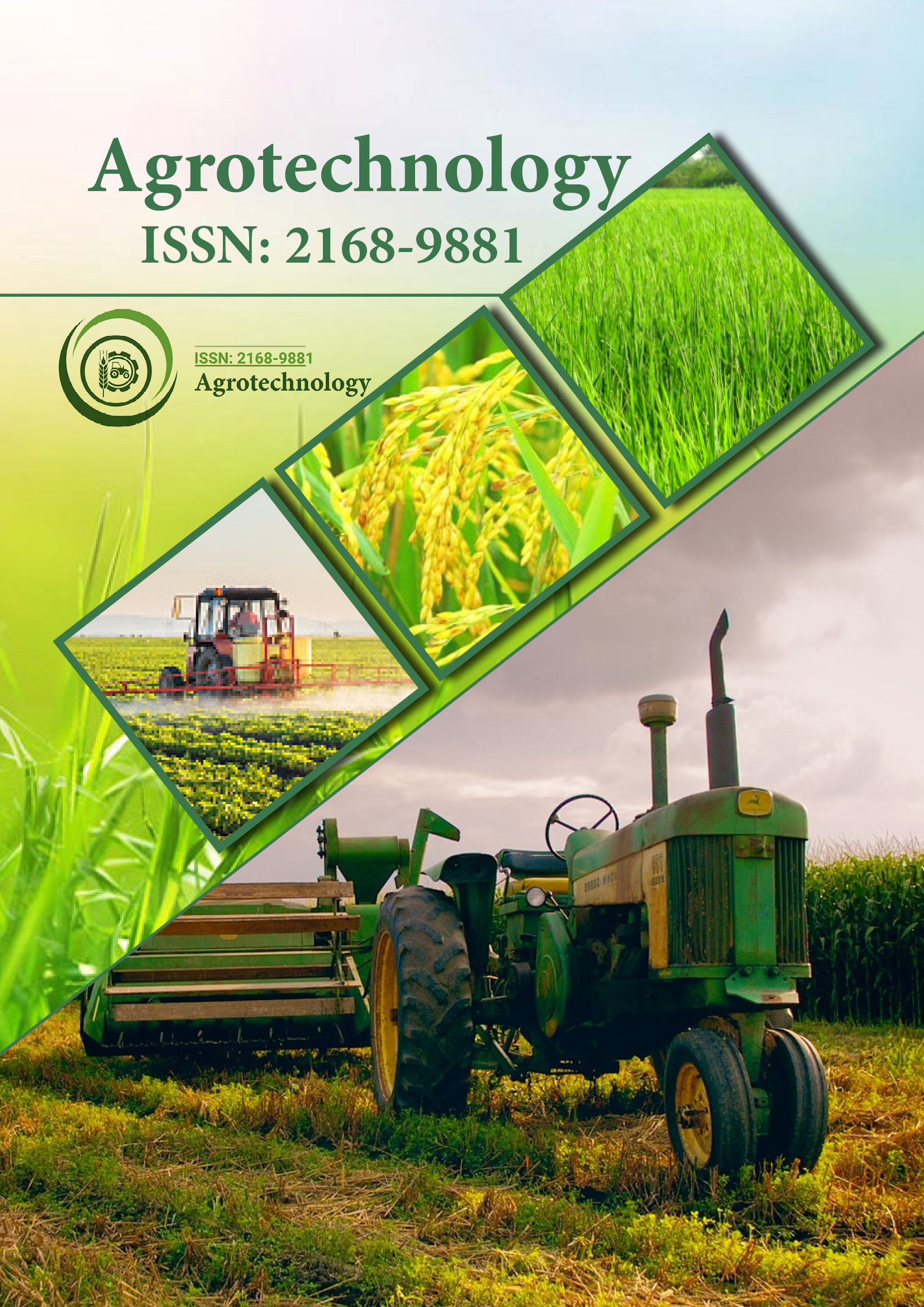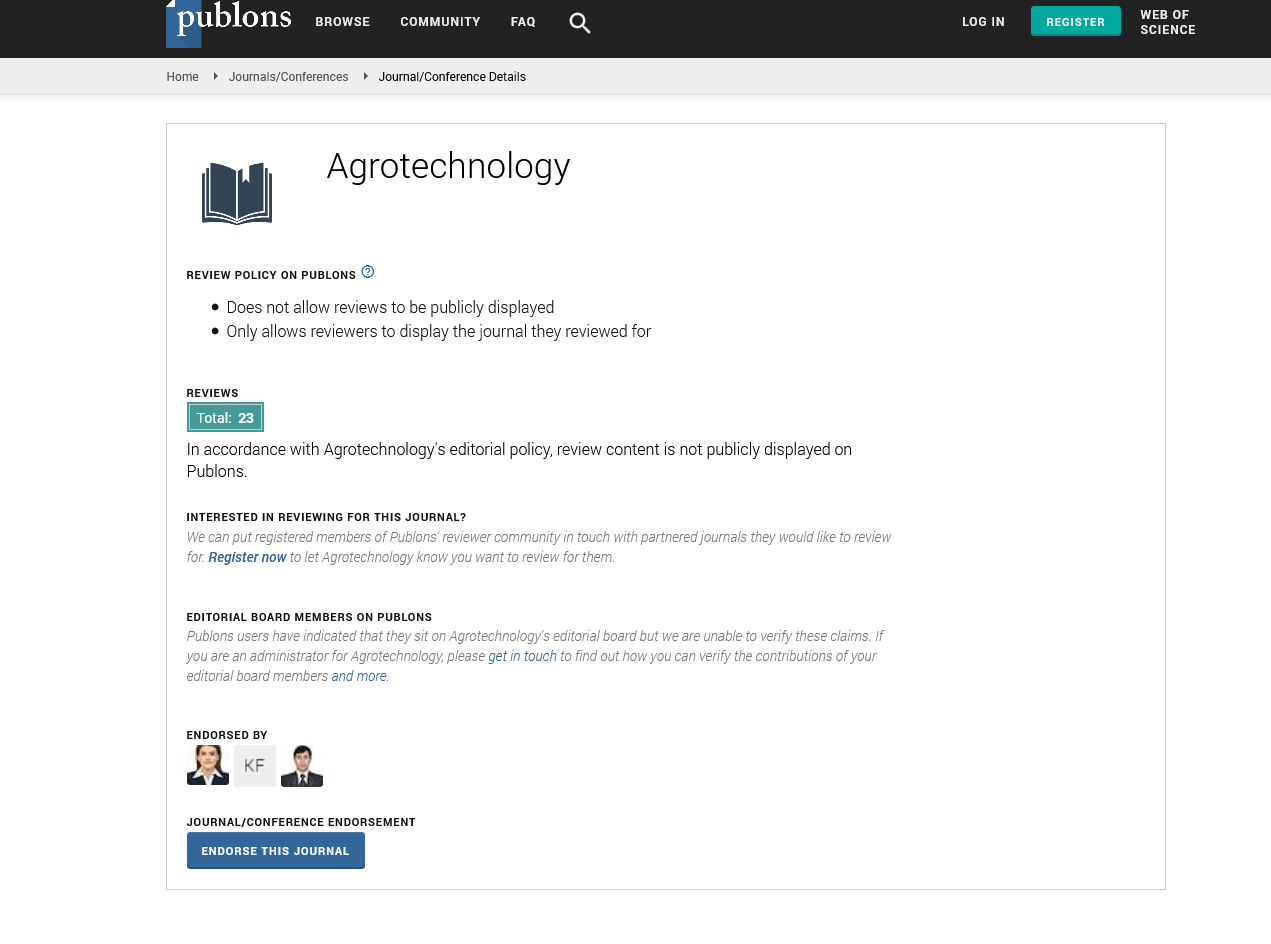Indexed In
- Open J Gate
- Genamics JournalSeek
- Academic Keys
- ResearchBible
- Cosmos IF
- Access to Global Online Research in Agriculture (AGORA)
- Electronic Journals Library
- RefSeek
- Directory of Research Journal Indexing (DRJI)
- Hamdard University
- EBSCO A-Z
- OCLC- WorldCat
- Scholarsteer
- SWB online catalog
- Virtual Library of Biology (vifabio)
- Publons
- Geneva Foundation for Medical Education and Research
- Euro Pub
- Google Scholar
Useful Links
Share This Page
Journal Flyer

Open Access Journals
- Agri and Aquaculture
- Biochemistry
- Bioinformatics & Systems Biology
- Business & Management
- Chemistry
- Clinical Sciences
- Engineering
- Food & Nutrition
- General Science
- Genetics & Molecular Biology
- Immunology & Microbiology
- Medical Sciences
- Neuroscience & Psychology
- Nursing & Health Care
- Pharmaceutical Sciences
Commentary - (2024) Volume 13, Issue 4
Fertilizer Optimization Techniques: Improving Soil Health and Effective Plant Growth
Elena Laura*Received: 29-Nov-2024, Manuscript No. AGT-24-27399; Editor assigned: 02-Dec-2024, Pre QC No. AGT-24-27399 (PQ); Reviewed: 16-Dec-2024, QC No. AGT-24-27399; Revised: 23-Dec-2024, Manuscript No. AGT-24-27399 (R); Published: 30-Dec-2024, DOI: 10.35248/2168-9891.24.13.390
Description
Fertiliser optimisation is a modern agricultural method that aims to improve soil health while also successfully increasing plant growth. This method depends on carefully regulating nutrient components, eliminating growth and ensuring that soil and plants have what they need to develop. Effective fertiliser optimisation involves not just supplying nutrients, but also monitoring soil conditions, identifying plant requirements and adapting treatments to maximize benefit. Agricultural methods which manage fertilisers effectively can help agricultural land be more productive and sustainable.
Soil testing is an essential component of fertiliser optimisation. Soil tests provide valuable information on nutrient levels, pH balance and organic matter content. This data enables farmers to precisely identify the demands of their soil and crops, eliminating the typical problem of excessive use. When fertilisers are applied excessively, they can cause discharges of nutrients, polluting adjacent water sources and destroying aquatic habitats. Farmers can avoid these negative consequences by recognizing specific nutrient demands through soil analysis and utilising fertilisers more efficiently.
Another significant approach for optimizing fertiliser is application timing. Fertilisers work best when given during specific growth stages, allowing plants to absorb nutrients when they are most needed. This approach, often known as "split application," involves dividing fertiliser doses throughout the growth season rather than administering them all at once. Plants receive continuous nutritional support when treatments are timed correctly, without consuming the soil or producing waste. This approach also matches fertiliser consumption with the plant's natural development cycle, increasing absorption efficiency and lowering the risk of nutrient leaching.
The use of controlled-release fertilisers adds to this precision. These fertilisers are intended to gradually release nutrients over time, matching the plant's growth requirements. While conventional fertilisers, which offer nutrients all at once, controlled-release choices provide a consistent nutrient supply and stimulating plant development without challenging the soil. This consistent, fixed nutrient release reduces the environmental effect of farming while cultivating healthier soil structure, because minerals are available in controllable amounts that soil bacteria can efficiently digest.
Organic fertilisers, including as compost and manure, play an important role in nutrient management. These natural fertilisers not only provide significant nutrients, but they also improve soil structure and retain moisture. By mixing organic matter into the soil, they produce a better microbial community, which improves nutrient availability and root development. These fertilisers' organic content stimulates the production of humus, which improves the soil's ability to hold moisture and nutrients, resulting in an optimal environment for plant growth.
Precision agriculture technologies have also improved fertilizer optimization. Farmers may apply fertilizers with high precision using tools such as GPS mapping, remote sensing and data analytics, ensuring that each area of the crop receives the proper amount of nutrients. Variable rate technology, for example, changes fertilizer doses in response to specific field situations, reducing the risk of fertilization imbalance in different zones. These technologies allow farmers maximize crop potential while protecting soil health, allowing them to use resources carefully.
Protect cropping is an additional useful strategy that enhances fertiliser optimization. Growing cover crops during winter months allows farmers to organically restore soil nutrients, minimize loss and enhance soil structure. Cover crops, like grains, have the extra benefit of fixing nitrogen in the soil, reducing consumption for synthetic nitrogen fertilisers. This process improves the soil, increasing nutrient availability for the coming crop cycle. Additionally, cover crops contribute to a healthy soil environment, which benefits microbial communities that play an important role in nutrient cycling.
Crop rotation, in addition to fertilizer control, can help to improve soil health. Crops have different nutrient requirements and by rotating them, farmers may avoid loss of nutrients and balance soil composition. For example, a nitrogen-demanding crop can be followed by a nitrogen-fixing crop, allowing for natural nitrogen supply. This approach reduces need on synthetic fertilisers, which may gather in the soil and affect for long time fertility.
In conclusion, fertiliser management is an extensive approach to enhancing soil health and facilitating efficient plant development. Farmers can regulate nutrients to support environmentally friendly, productive farming by using soil testing, precise timing, controlled-release products, organic modifications, precision technology, cover cropping and crop rotation. As agricultural needs rise, these approaches provide a balanced, environmentally friendly solution that not only boosts productivity but also protects the land for future generations.
Citation: Laura E (2024). Fertilizer Optimization Techniques: Improving Soil Health and Effective Plant Growth. Agrotechnology. 13:390.
Copyright: © 2024 Laura E. This is an open access article distributed under the terms of the Creative Commons Attribution License, which permits unrestricted use, distribution, and reproduction in any medium, provided the original author and source are credited.


